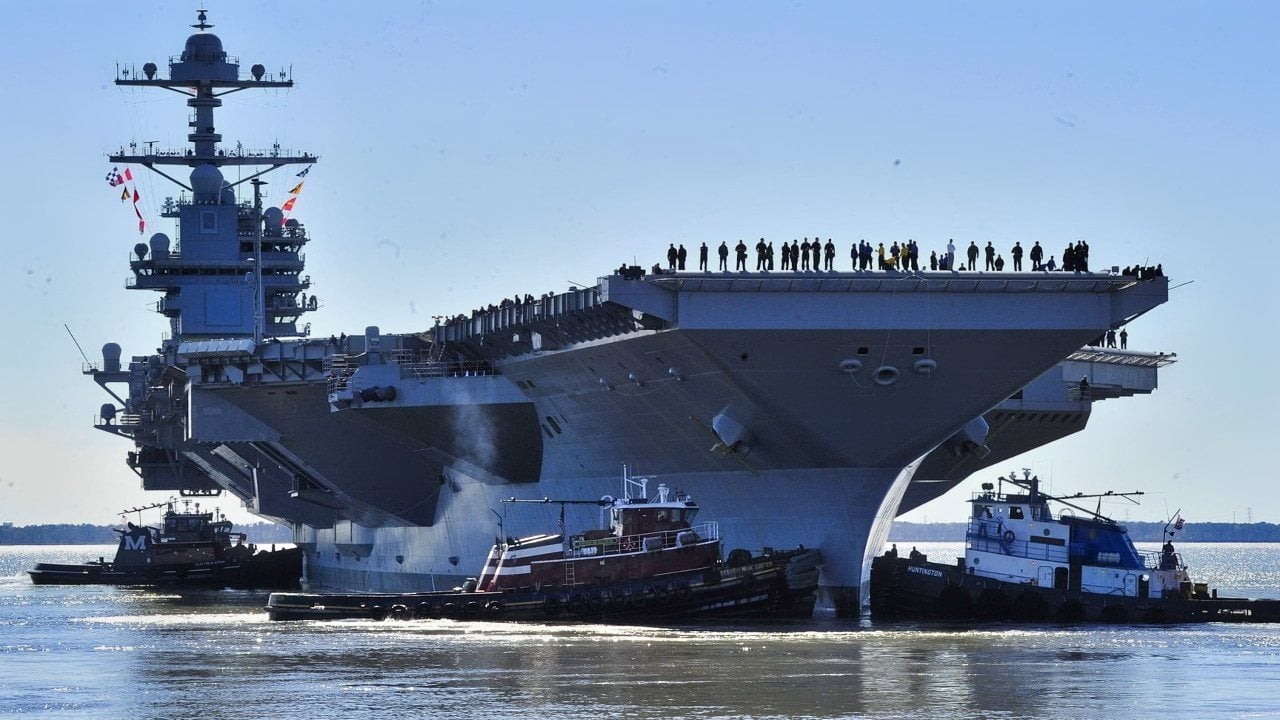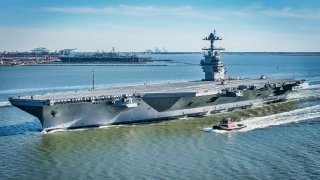$13,300,000,000: Why the Navy's Ford-Class Aircraft Carrier Is So Expensive
The USS Gerald R. Ford (CVN-78) faced cost overruns and delays, reaching $13.3 billion, exceeding initial estimates. Despite these issues, the Ford-class carriers are projected to save $5 billion each over their lifespan due to reduced maintenance costs and smaller crew sizes.
Summary and Key Points: The USS Gerald R. Ford (CVN-78) faced cost overruns and delays, reaching $13.3 billion, exceeding initial estimates.

-Despite these issues, the Ford-class carriers are projected to save $5 billion each over their lifespan due to reduced maintenance costs and smaller crew sizes.
-The advanced technologies, like EMALS, justify the high upfront costs in the long run by enhancing operational capabilities and efficiency. The USS John F. Kennedy (CVN-79) is expected to meet its cost cap of $11.4 billion, showing improved budget management.
$13,300,000,000: Is the Ford-Class Aircraft Carriers Worth It?
A July 2017 article from National Defense put the price tag for the USS Gerald R. Ford (CVN-78), the lead vessel of a new class of nuclear-powered supercarrier to replace the aging Nimitz class, at $12.9 billion, and warned that the cost had already grown by nearly 23%. Jon Harper's article also came out before subsequent delays saw the final price tag increase to $13.3 billion.
However, at the time of that article's publication seven years ago, the U.S. Navy estimated the second ship in the class, the still-future USS John F. Kennedy (CVN-79) would "not cost more than $11.4 billion – the cap set by lawmakers." It appears that the sea service has been able to keep that number largely in check.
The other good news for the U.S. Navy – and not to mention the U.S. taxpayer – is that CVN-78 may cost less to operate over its service life than planned due to reduced maintenance costs. That will remain true for the rest of the Gerald R. Ford class as well. It was reported last November that the U.S. Navy can expect to save about $5 billion per ship than the preceding Nimitz-class nuclear-powered aircraft carriers over the life of each vessel.
The U.S. Navy had previously set a target of $4 billion per ship in savings.
Ford-Class High-Price Tag – For What?
Everything costs more, something anyone who has headed out to dinner or the grocery store likely knows. Yet, CVN-78 was constructed before our era of high inflation that began in earnest following the global COVID-19 pandemic.
The lead vessel in a new class of supercarriers incorporated multiple advanced systems, and it wasn't just the building of the warship that resulted in the high cost. Much of the money has gone towards the development of this new technology.
As Harrison Kass previously reported for The National Interest, "The Ford-class's $13 billion price tag was achieved through the research and development of novel technologies, which were incorporated into the new boat, and theoretically offer an advantage over predecessors."
This includes its electromagnetic catapults – EMALS – which can enable a larger variety of aircraft to be launched, and in quicker succession. Other advancements included greater automation, which has resulted in a smaller crew despite the supercarrier being slightly larger than the Nimitz class. That reduced crew size contributes to the reduced operating cost over the life of each carrier.
The increased price tag was also the result of the aforementioned delays.
After All the Delays – Worth It?
Following years of delays and cost increases, CVN-78 did take part in an extended delay that included a deployment to the Eastern Mediterranean to stop the escalation in the Israel-Hamas War that began following the terrorist attack on October 7, 2023.
"While in the Mediterranean, the carrier strike group participated in and supported numerous multinational exercises and vigilance activities to increase NATO capability and deter aggression in the region," the U.S. Navy announced following her lengthy deployment.
During the 239 days underway, the carrier, "logged more than 17,826 flight hours and 10,396 sorties, sailed more than 83,476 nautical miles, and safely transferred 20.7 million gallons of fuel with zero mishaps. The Ford crew conducted 33,444 flight deck moves, 3,124 hangar bay aircraft moves, 2,883 aircraft elevator moves, 16,351 aircraft fueling evolutions, and transferred 8,850 pallets of cargo and mail."

In other words, USS Gerald R. Ford operated as expected. But the question is whether that justifies the massive cost of more than $13.3 billion.
According to Bryan Clark, a former U.S. Navy officer and senior fellow and director of the Center for Defense Concepts and Technology at Hudson Institute, the cost for the new systems simply wasn't justified at least in the short term. However, he told NPR earlier this year that in the long term, the costs will pay off.
"The Navy missed its recruiting targets by 20% last year, so they can't afford to have more ships entering the fleet that require more people than their predecessors," Clark suggested.
The goal of the program will be to ensure that future carriers of the Gerald R. Ford class can come down in cost, and not sink the U.S. Navy's entire budget.
Author Experience and Expertise: Peter Suciu
Peter Suciu is a Michigan-based writer. He has contributed to more than four dozen magazines, newspapers, and websites with over 3,200 published pieces over a twenty-year career in journalism. He regularly writes about military hardware, firearms history, cybersecurity, politics, and international affairs. Peter is also a Contributing Writer for Forbes and Clearance Jobs. You can follow him on Twitter: @PeterSuciu. You can email the author: [email protected].
All images are Creative Commons or Shutterstock.
From the Vault
Russia Freaked Out: Why the U.S. Navy 'Unretired' the Iowa-Class Battleships
Battleship vs. Battlecruiser: Iowa-Class vs. Russia's Kirov-Class (Who Wins?)


